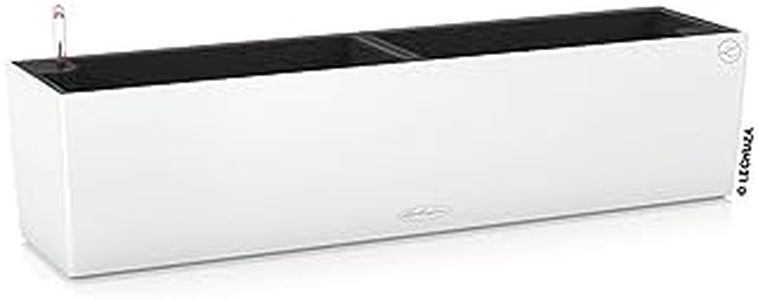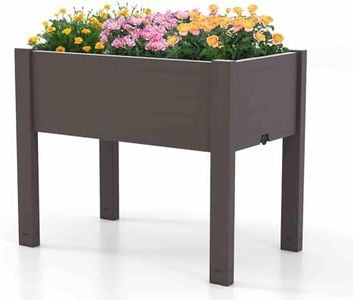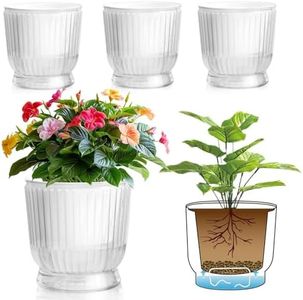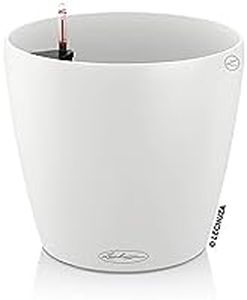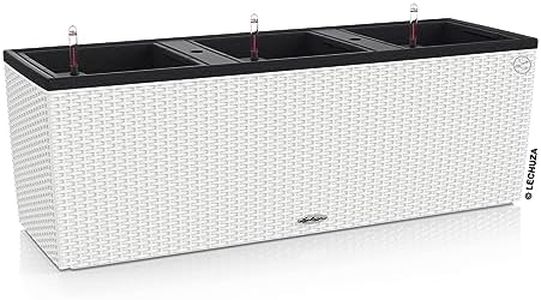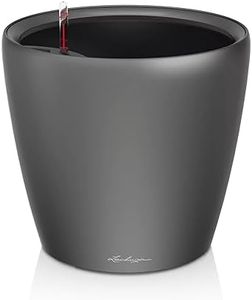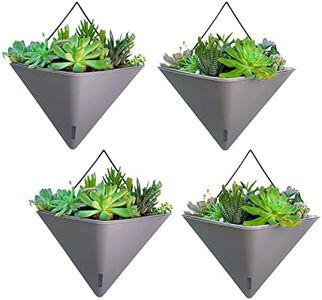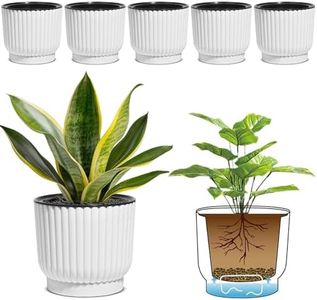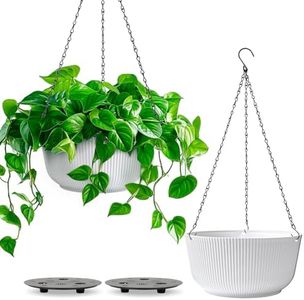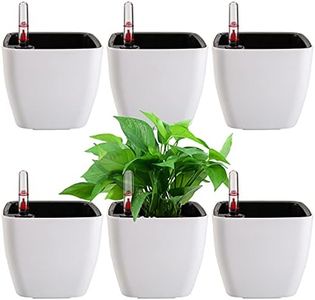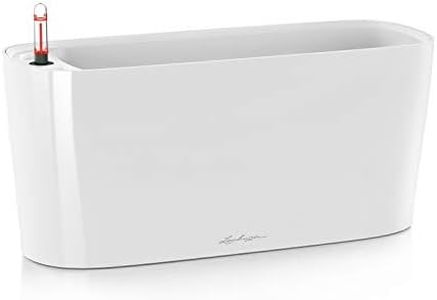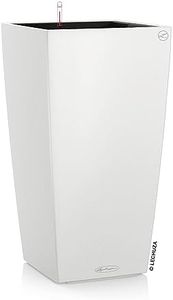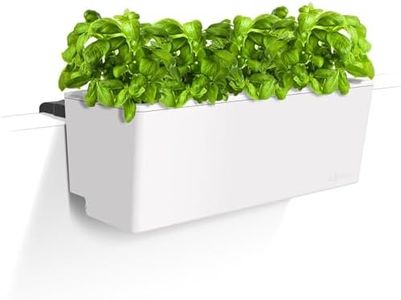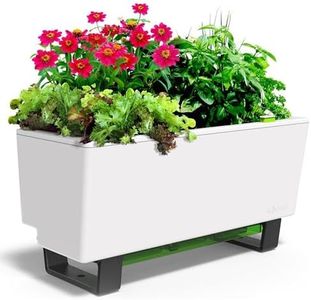We Use CookiesWe use cookies to enhance the security, performance,
functionality and for analytical and promotional activities. By continuing to browse this site you
are agreeing to our privacy policy
10 Best Self Watering Planters
From leading brands and best sellers available on the web.Buying Guide for the Best Self Watering Planters
Choosing the right self-watering planter can make plant care easier and more consistent, especially if you’re busy or sometimes forget to water your plants. Self-watering planters are designed to provide a steady supply of water to your plants, allowing you to water less frequently while promoting healthy growth. When picking the best self-watering planter for your needs, it’s helpful to understand the main features and how each one relates to the type of plants you own and your personal habits.Reservoir CapacityThe reservoir capacity refers to how much water the planter can hold in its self-watering section. This is important because it determines how often the planter needs to be refilled. Smaller capacities are suitable for small plants or if you enjoy checking on your plants regularly. Medium capacities fit most home situations, giving you a few days to a week between refills. Large reservoirs are best if you travel frequently, have larger plants, or want the lowest-maintenance setup. Think about how often you want to refill the water and how thirsty your plants are to choose a reservoir size that matches your routine.
Wicking System TypeThe wicking system is how water moves from the reservoir to the plant roots. Some planters use a wick made of fabric or rope, while others use a tray or platform that lets roots grow down into the water. Wicking with fabric is gentle and works well for delicate or small plants, but may not deliver enough water for large or fast-growing plants. Direct root access systems are better for bigger or thirstier plants, as they allow roots to draw up more water. Pick a system based on your plant’s root structure and water needs—plants with fine roots or prone to root rot often do better with gentler wicking.
Overflow and Drainage FeaturesOverflow and drainage features help prevent overwatering and root rot. Some planters have overflow holes that let extra water escape, while others include removable plugs or spouts for draining excess water. If you keep your planter outdoors or over-water easily, a good overflow system is important to protect your plants from drowning. For indoor use, drainage may be less critical if you monitor water levels carefully. Think about your watering habits and whether your planter will be exposed to rain to decide what level of overflow protection you need.
Material and DurabilitySelf-watering planters come in various materials like plastic, ceramic, metal, or wood. Plastic is lightweight and usually less expensive, but may not be as stylish. Ceramic and metal look nicer as decor, but can be heavier or more fragile. For outdoor use, UV-resistant or weatherproof materials are best to avoid fading and cracking. Indoor planters can be picked mainly for appearance and fit. Think about where your planter will live—indoors or outdoors—and how much you move your plants when choosing materials.
Size and ShapeThe size and shape affect what kind of plants you can grow in the planter. Small, compact planters suit herbs or windowsill plants. Medium sizes handle houseplants or small vegetables. Large, deep planters are needed for big, mature plants or those with deep root systems. Tall or narrow shapes are best for upright plants, while wider, shallower planters fit spreading or trailing varieties. Consider the mature size of your plant and where you want to put the planter to help you decide which shape and size fits your needs.
Water Level IndicatorA water level indicator shows when the reservoir needs refilling, which helps prevent both over- and under-watering. Some are simple floats you can read at a glance, while others are built-in windows. If you like low-maintenance care or tend to forget to check, an indicator is very useful. If you enjoy checking your plants or have a few planters only, you may be fine without this feature. Decide how much “reminder” you’d like when choosing a self-watering planter.
